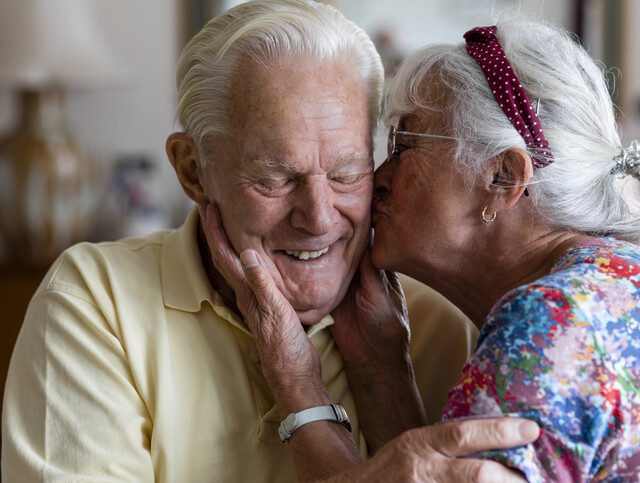Alzheimer’s & Brain Awareness Month takes place annually each June. It provides an opportunity to join the Alzheimer’s Association in conversation and education about the brain, brain health, Alzheimer’s disease and other types of dementia. Typically there are events, fundraisers and other special activities held throughout the month. The Longest Day is the single largest global event of the month that takes place during summer solstice each year. During the annual event “thousands of participants from across the world come together to fight the darkness of Alzheimer’s through an activity of their choice.” Wearing purple is also encouraged.
The ultimate goal of these events is to eventually find a cure to Alzheimer’s. In this article we will take a closer look at the disease, other common types of dementia, warning signs and more. At Village on the Green, we witness the effects of Alzheimer’s first-hand. We strive to provide our residents with the most up-to-date information possible, while also supporting research efforts.
What is Alzheimer’s?
The National Institute on Aging defines Alzheimer’s as “an irreversible, progressive brain disorder that slowly destroys memory and thinking skills.” Eventually, Alzheimer’s impacts a person’s ability to carry out the simplest of tasks. The disease is the sixth leading cause of death in the U.S.
Alzheimer’s is also the most common type of dementia, which according to the Alzheimer’s Association, is a general term for loss of memory and other mental abilities severe enough to interfere with daily life. Worldwide, approximately 50 million people are living with dementia.
Other common types of dementia include:
- Creutzfeldt-Jakob Disease
- Lewy Body Dementia
- Frontotemporal Dementia
- Huntington’s Disease
- Normal Pressure Hydrocephalus
- Posterior Cortical Atrophy
- Vascular Dementia
You can learn about these and other types of dementia on the Alzheimer’s Association website.
Common signs and symptoms of Alzheimer’s
Even though age is the best known risk factor for Alzheimer’s disease — the number of people living with the disease doubles every five years beyond age 65 — it is not a normal part of aging.
The Alzheimer’s Association has identified 10 early signs and symptoms of Alzheimer’s.
- Memory loss that disrupts daily life
- Challenges in planning or solving problems
- Difficulty completing familiar tasks
- Confusion with time or place
- Trouble understanding visual images and spatial relationships
- New problems with words in speaking or writing
- Misplacing things and losing the ability to retrace steps
- Decreased or poor judgment
- Withdrawal from work or social activities
- Changes in mood and personality
Getting checked by your healthcare provider can help determine if the symptoms you are experiencing are related to Alzheimer’s disease. Early and accurate diagnosis of Alzheimer’s provides opportunities for you and your family to anticipate treatment and care needs.
Research to find a cure and end Alzheimer’s
The Alzheimer’s Association is the largest nonprofit funder on Alzheimer’s research. It is committed to accelerating the global progress of new treatments, preventions and, ultimately, a cure. The Mayo Clinic websitenotes that “despite many promising leads, new treatments are slow to emerge.” This is partially due to the complexities of the brain and of the disease itself.
Several studies are more focused on treatment options versus finding a cure. It is speculated that future Alzheimer’s treatments may include a combination of medications. Treatment options that are currently being studied include taking aim at clumping plaques and reducing inflammation.
The Mayo Clinic also says there is growing evidence that suggests brain health is closely linked to heart and blood vessel health. Addressing these issues may reduce the risk of dementia.
While a cure for Alzheimer’s may be a ways off, there is one powerful way people diagnosed with Alzheimer’s and caretakers can make a difference: finding and volunteering for clinical trials.
Alzheimer’s & Brain Awareness Month at Village on the Green
Village on the Green residents from all levels of care will be invited to participate in our activities for Alzheimer’s & Brain Awareness Month. Residents are also encouraged to wear purple, which is the official color of the Alzheimer’s movement.
Our team understands the vital importance of promoting brain health and educating residents and their families on the signs and symptoms of and support for Alzheimer’s. At Village on the Green, we also completed an exciting new memory care expansion. Our updates include private memory care suites and gathering places that inspire meaning and joy.
If you’d like more information on our senior living community and the memory care support we can provide, we would love to chat! Fill out the form below or give us a call at 407-682-0230.


